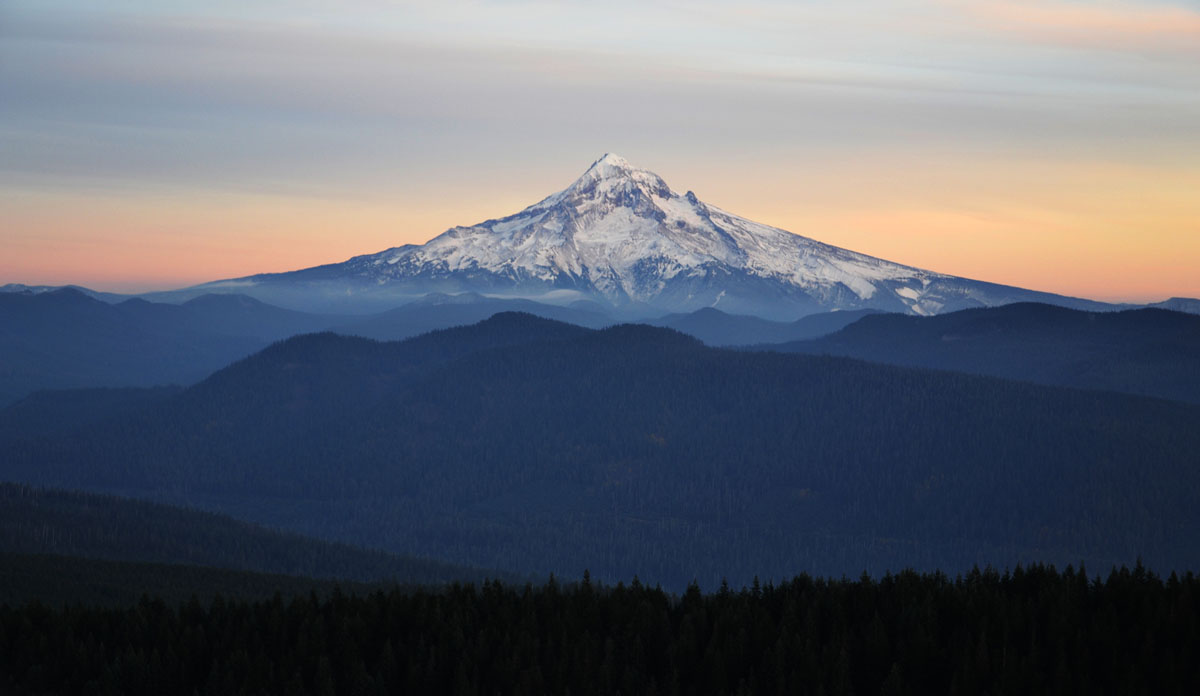
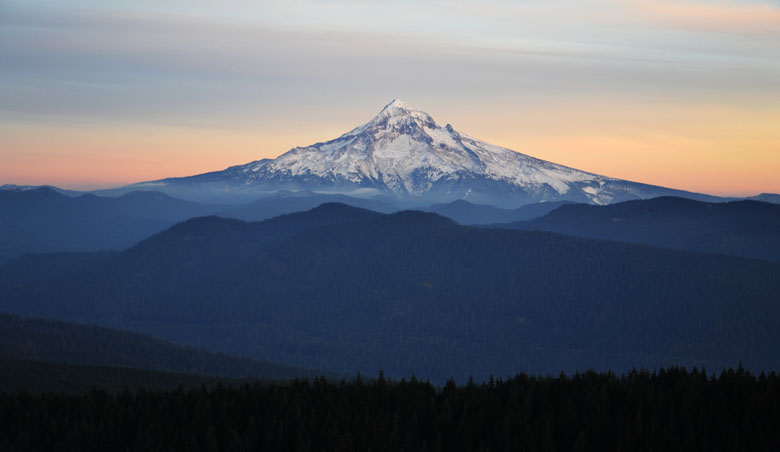
Nikon 35mm f/1.8 (tsaiproject)
Nikon has an impressive collection of DX-format cameras to choose from—the latest generation includes the entry-level D3500, mid-range D5600, and prosumer D7500. And regardless of your photography experience or style, below are the best Nikon DX lenses on the market in 2019. In the process we’ve kept a keen eye on value, and have included zooms and prime lenses across categories from wide angle and portrait to telephoto. For more information, see our detailed lens comparison table and buying advice below the picks.
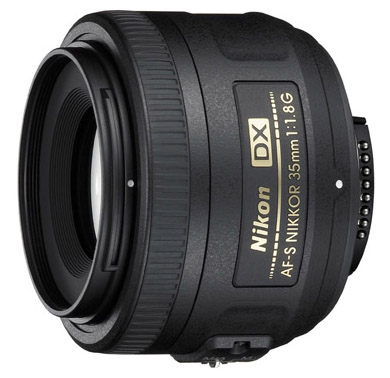 Category: Travel/portrait
Category: Travel/portrait
Weight: 7.1 oz.
What we like: Pro-grade optics for less than $200.
What we don’t: Not nearly as versatile as the zoom lenses on this list.
Many Nikon cameras are sold with fairly mediocre kit zoom lenses, but adding a fast prime to the mix can increase the quality of your photos in a hurry. We think the Nikon 35mm f/1.8G is the ticket: it’s sharp, lightweight, and strong in low light with a maximum aperture of f/1.8. And perhaps most importantly, it’s a great value at just under $200. For everything from travel and street photography to portraits, this is a great DX lens to have in your bag.
What are the downsides of the Nikon 35mm f/1.8G? As is the case with any prime lens, it won’t give you nearly as much versatility as a zoom (it’s more of a complimentary lens than an all-in-one solution). And aside from a metal mount, the lens has a mostly plastic build. But this doesn’t stop us from recommending it—the 35mm f/1.8 will give you sharpness, bokeh, and low light performance that you just can’t get from a zoom, let alone in this price range. For another quality prime option from Nikon, see the 50mm f/1.8G below.
See the Nikon 35mm f/1.8G
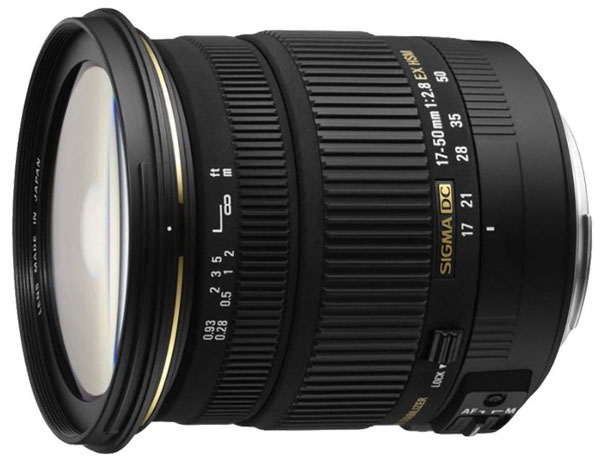 Category: Travel zoom
Category: Travel zoom
Weight: 19.9 oz.
What we like: Fast and reasonably priced.
What we don’t: Zoom ring works in reverse of Nikkor lenses.
One of the most popular lenses for full-frame cameras is the 24-70mm f/2.8—it’s the quintessential pro zoom. But the comparable options for DX are a bit tricky, including the old and very pricey Nikon 17-55mm f/2.8 (a whopping $1,500) and newer Nikon 16-80mm f/2.8-4 below (also over $1,000). Taking both image quality and value into account, we prefer the Sigma 17-50mm f/2.8. For less than $300, you get impressive low light performance and bokeh, good sharpness, and solid focal length coverage from wide angle to portraits. All in all, this is a premium walk-around lens that will outperform most other zooms on the list.
Keep in mind that the Sigma 17-50mm f/2.8 is slightly quirky. In general, third-party lenses often aren’t quite as quick to focus—Sigma also makes this lens with mounts for Canon, Sony, and Pentax cameras, so the one-size-fits-all build has its shortcomings. In addition, the zoom ring works in the reverse direction of Nikkor and the focus ring continues to turn when autofocus is engaged, both of which may give you some pause if you’re used to shooting with native Nikon glass. These issues aside, you’ll have a hard time finding better image quality for the price, which is why we have the Sigma ranked here.
See the Sigma 17-50mm f/2.8
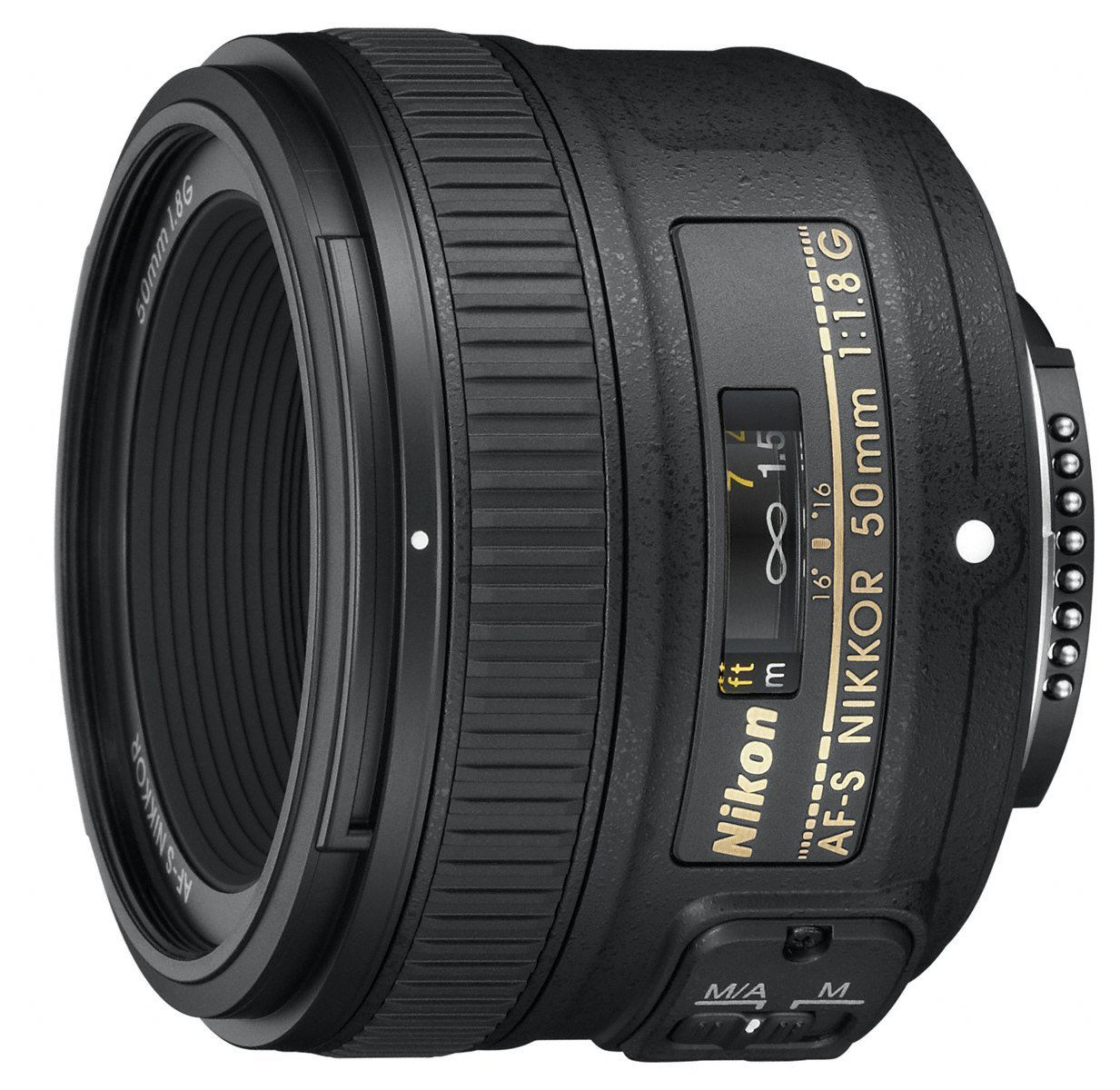 Category: Portrait
Category: Portrait
Weight: 6.6 oz.
What we like: A great portrait lens for a reasonable price.
What we don’t: Not quite as sharp as the 35mm f/1.8 above.
With our top pick, we raved about the usefulness of a fast prime that doesn’t break the bank, but the 35mm f/1.8 isn’t your only option in this category. The Nikon 50mm f/1.8G is a classic lens: on DX cameras it has a 75mm focal length equivalent, which is ideal for portraiture. In terms of optics, the lens is sharp, great in low light, focuses quickly and accurately, and weighs only 6.6 ounces. Compared to a zoom, the 50mm f/1.8 can help give your photos a much crisper and more professional look.
Keep in mind that the 50mm f/1.8G technically is an FX lens, although many people use it on DX cameras given the affordable price point. The dual compatibility isn’t necessarily a bad thing: you get slightly better build quality than the 35mm f/1.8 above and can bring this lens along should you ever decide to upgrade cameras down the road. For either system, it’s a terrific lens at a very approachable price point.
See the Nikon 50mm f/1.8G
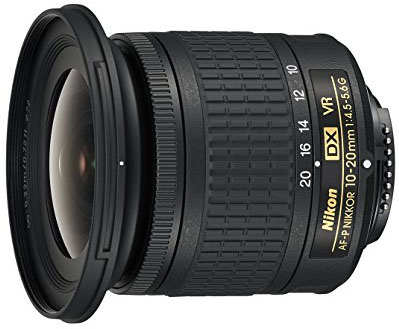 Category: Wide angle
Category: Wide angle
Weight: 8.1 oz.
What we like: Finally, an affordable wide-angle zoom from Nikon.
What we don’t: Low light performance and plastic-y build.
For years, finding a wide-angle zoom was a big challenge for DX camera owners. Nikon offered the 10-24mm f/3.5-4.5 below, but that lens is nearly $1,000. At the same time, Canon blazed the trail with its inexpensive 10-18mm f/4.5-5.6, which is available for only $279. But Nikon came to the plate in a big way in 2017, releasing the 10-20mm f/4.5-5.6. Most importantly, landscape photographers and other wide-angle shooters have a viable DX option at a reasonable price.
It’s important to have reasonable expectations with a lens like the Nikon 10-20mm. There is a lot of plastic in the build, but that does help keep weight down to a very reasonable 8.1 ounces (many wide-angle zooms are double that or more). More, the maximum aperture of f/4.5-5.6 means that shooting sunsets and other low-light scenarios will be a challenge. But we love the sharpness and image quality overall, making this is a must-have lens for uses like outdoor photography and architecture.
See the Nikon 10-20mm f/4.5-5.6G
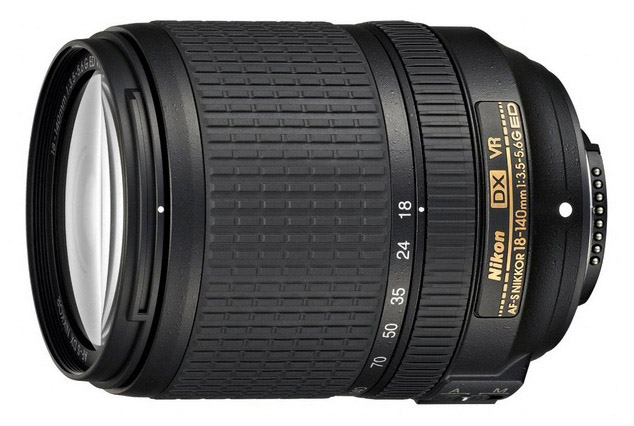 Category: Travel zoom
Category: Travel zoom
Weight: 17.3 oz.
What we like: A super versatile lens with a nice focal length range.
What we don’t: Doesn’t go as wide as the 16-80mm or 16-85mm below, and not quite as sharp either.
Walk-around zooms have become increasingly popular for their convenience, but choosing the right one can be tricky. Yes, the 16-80mm below is a superior lens from an optical perspective, but not everyone wants to spend over $1,000 for the privilege (that's higher than the cost of most DX cameras). Enter the 18-140mm f/3.5-5.6, which we think is one of the best values on this list. It’s optically superior to Nikon’s other kit lenses like the 18-55mm and 18-105mm, yet cheaper and lighter than higher-end options like the 16-80mm and 16-85mm. For many people, it hits the sweet spot of price and performance.
What are the compromises of the Nikon 18-140mm? The lens has some distortion, particularly at the ends, although all of Nikon’s recent DSLRs have a built-in distortion correction mode. And low light performance at f/3.5-5.6 is fairly marginal, which can be an issue depending on the type of photography you like to shoot most. But it’s hard to argue against the versatility of this lens, including the big zoom range at a 27-210mm equivalent.
See the Nikon 18-140mm f/3.5-5.6G
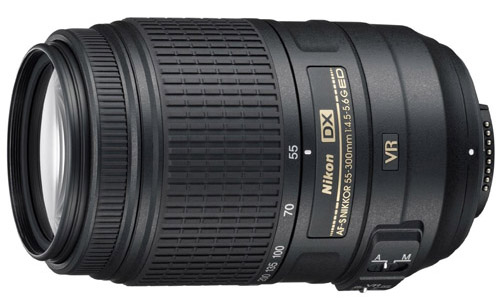 Category: Telephoto
Category: Telephoto
Weight: 18.7 oz.
What we like: 300mm of reach matters for wildlife and other uses.
What we don’t: Heavy and bulky.
Given that many Nikon DX cameras are sold with an 18-55mm kit lens, a healthy number of photographers add one telephoto lens for a complete set-up. The leading options are the 55-300mm and 55-200mm below: both offer similar optical performance and come with vibration reduction, but the 55-200mm is lighter and about $50 cheaper. But the sticking point for us is zoom: we find the extra 100mm to be super useful, and particularly for things like wildlife photography, which is why we have the 70-300mm ranked here.
What are the downsides of the Nikon 55-300mm f/4.5-5.6G? It’s decently heavy at over 18 ounces, the autofocus can hunt on occasion (a common issue with telephoto zooms), and low light photography can be issue (you’ll likely want a tripod for wildlife and sunset photography). It’s also worth noting that a couple of years ago, Nikon released the 70-300mm f/4.5-6.3G for DX, which manages to shave some weight at 14.6 ounces total. Given that most people use these types of lenses mostly at the telephoto end of the spectrum, losing 15mm at the wide end doesn’t have a huge impact.
See the Nikon 55-300mm f/4.5-5.6G
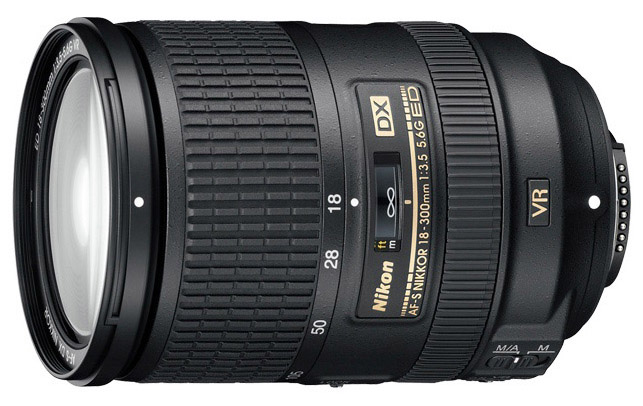 Category: All-in-one
Category: All-in-one
Weight: 19.4 oz.
What we like: Incredible versatility. This is our favorite all-in-one lens for Nikon DX.
What we don’t: Image quality can’t quite match specialty primes or zooms at their respective focal lengths.
We’ll start by saying that we aren’t huge fans of all-in-one lenses. The convenience is incredible: you can cover virtually the entire spectrum of focal lengths without changing lenses. But the reality is that image quality just can’t compete with specialty primes or zooms at their respective focal lengths. Having said that, the Nikon 18-300mm f/3.5-6.3 is the best of the bunch and a very popular option for travel and everyday use.
The good news is that the latest version of the 18-300mm is even lighter and cheaper than in the past, with the only real sacrifice being a maximum aperture of f/6.3 at the long end. And we definitely like this lens more than the 18-200mm below, which is in the same price range but somehow even heavier. Neither will give you pro-level optics, but they are the most versatile lenses on the DX market, and that means something.
See the Nikon 18-300mm f/3.5-6.3G
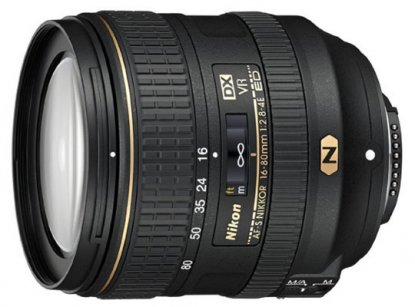 Category: Travel zoom
Category: Travel zoom
Weight: 17 oz.
What we like: Premium image quality and useful focal length range.
What we don’t: Very expensive.
For background, Nikon created the 16-80mm f/2.8-4 as the kit lens for its ultra-high-end D500. Like the Sigma 17-50mm f/2.8 above, it’s designed to mimic the fast, pro-level zooms that are so popular for full-frame cameras. In this case, the 16-80mm is equivalent to 24-120mm on a 35mm camera, a very healthy zoom range that goes wider than many of the lenses on this list (most are 27mm at the wide end). Compared to the old Nikon 17-55mm f/2.8, the 16-80mm is $400 cheaper and weighs about 9 ounces less. If you’re looking for a high-quality travel zoom from Nikon, this is it.
We love the premium images created by the Nikon 16-80mm, but it’s quite pricey at over $1,000 while not hitting the constant f/2.8 maximum aperture that we like from our high-end zooms. In addition, the lens is surprisingly heavy on distortion, but that easily can be corrected in-camera on most new Nikon DSLRs. All things considered, the 16-80mm isn’t perfect, but we like the optical quality and versatility. There is good reason why it’s the kit lens for Nikon’s top crop-sensor camera.
See the Nikon 16-80mm f/2.8-4E
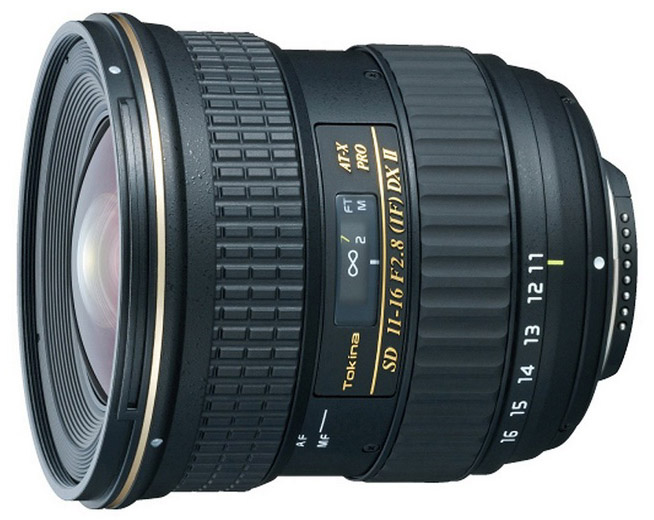 Category: Wide angle
Category: Wide angle
Weight: 19.8 oz.
What we like: The fastest wide-angle zoom on this list at f/2.8.
What we don’t: Softness toward the edges.
Before Nikon released the inexpensive 10-20mm f/4.5-5.6 above, we had the Tokina 11-16mm as our top wide-angle zoom for DX. This is an interesting lens: with a maximum aperture of f/2.8, it offers impressive low light performance and bokeh that you just won’t get from the slower zooms on the list. For serious outdoor photographers and others who frequently shoot in low natural light, the Tokina is an intriguing option.
Why is the Tokina 11-16mm f/2.8 ranked here? First is distortion, which is heaviest at the wide end but still noticeable through 16mm. Second, sharpness could better, and particularly toward the edges of the frame. Third, the focal length range is smaller than the other wide-angle zooms on this list with a 16.5-24mm equivalent. Finally, Tokina build quality generally is fine but not quite up to Nikon standards. Nevertheless, this is the fastest wide-angle zoom on this list and less than half of the price of the Nikon 10-24mm f/3.5-4.5 below.
See the Tokina 11-16mm f/2.8
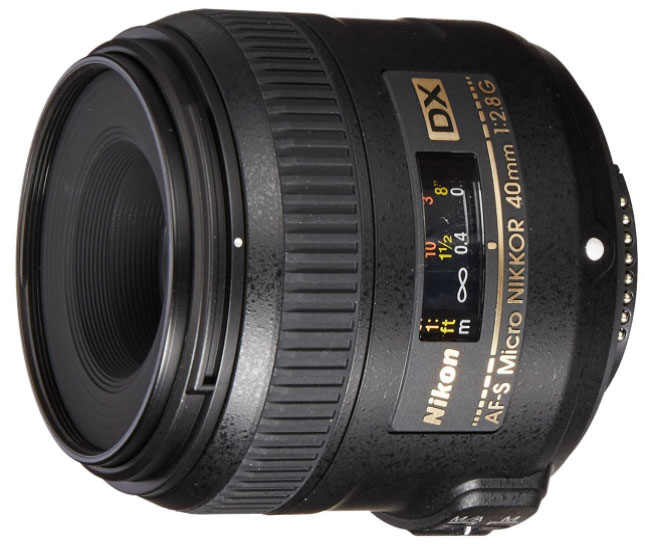 Category: Macro
Category: Macro
Weight: 8.3 oz.
What we like: Super sharp and a good price.
What we don’t: No vibration reduction.
Many lens categories are represented on this list, including wide angle, portrait, and telephoto. But Nikon makes a couple of really nice macro options for DX too (Nikon calls them “Micro”), including the 40mm f/2.8. With a 60mm focal length equivalent, this lens is sharp, reasonably fast with an f/2.8 maximum aperture, and focuses well all the way up to around 6 inches from your subject. And for macro enthusiasts, the lens boasts the ever-important 1:1 magnification ratio.
Perhaps the biggest complaint about the Nikon 40mm Micro is that it lacks vibration reduction (the Nikon 85mm Micro lens does have VR, although that is an f/3.5 lens). Normally a lens with an f/2.8 maximum aperture would be fine without VR, but macro photography can require a steady hand depending on the circumstances. For those looking to get even closer to their subjects, the 85mm Micro is another solid option but considerably more expensive at around $550.
See the Nikon 40mm f/2.8G
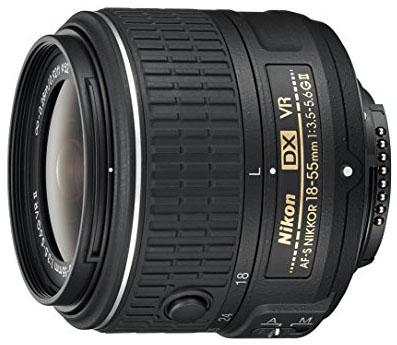 Category: Travel zoom
Category: Travel zoom
Weight: 6.9 oz.
What we like: Not a bad option as part of a Nikon kit.
What we don’t: Image quality is fairly mediocre overall.
The Nikon 18-55mm VR II is perhaps the most widely-used lens on the list. The reason? It’s available in kits with just about every crop sensor Nikon DSLR market, and for considerably less than the MSRP on its own. For the usual $100 more than the cost of the camera body, it’s a fine option that will get you out of the door and snapping good photos. Nikon has improved the lens with each rendition and the current model is better and lighter than its predecessors.
In terms of optics, there is nothing extraordinary about this lens. The 18-55mm focal length range is equivalent to 27-82.5mm on a 35mm camera, which is good but not as versatile as the 18-140mm or 16-80mm above. More, the lens isn’t super sharp and mediocre in low light (on par with many other inexpensive zooms). If you’re on a budget and don’t want to spend much on lenses, this is an attractive budget option. But for people who want to take their photography to the next level, we recommend considering the superior options above.
See the Nikon 18-55mm f/3.5-5.6G
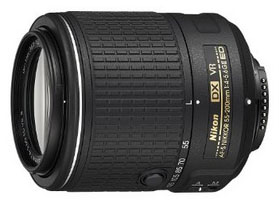
Category: Telephoto
Weight: 10.6 oz.
What we like: Lightweight for a telephoto zoom.
What we don’t: Some people will want more reach.
For those looking to complement their 18-55mm kit lens, the 55-200 is one of the cheapest and lightest ways to do so. For $350, you get 200mm of reach, good sharpness, an impressively low weight of 10.6 ounces, and a small form factor. In addition, Vibration Reduction makes hand-held photos easier and autofocus is decently fast for a lens of this type.
Our main issue with the Nikon 55-200mm is the focal length range. On multiple occasions, we’ve tried taking wildlife photos fully zoomed in at 200mm, and it’s an uphill battle to say the least. And given that the price is higher on this VR II than previous versions, you aren’t saving a bunch of money by going this route. If you’re looking for basic telephoto coverage without weighing down your camera bag, this is fine option. For those who plan on getting a decent amount of use out of their telephoto zoom, we like Nikon 55-300mm and 70-300mm models more.
See the Nikon 55-200mm f/4-5.6G
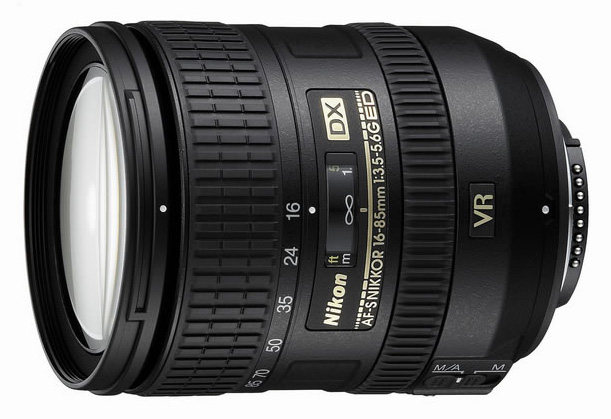 Category: Travel zoom
Category: Travel zoom
Weight: 17.1 oz.
What we like: Surprisingly sharp for a walk-around zoom.
What we don’t: In this category, we prefer the cheaper 18-140mm f/3.5-5.6 above.
The DX field is awash with walk-around zooms these days, but each has a purpose and target audience. In the case of the 16-85mm f/3.5-5.6, it offers considerably better optical performance than the classic 18-55mm kit lens. We love the focal length range in particular, which is equivalent to 24-127.5mm on a 35mm camera (24mm at the wide end is much more useful for landscapes than the 27mm equivalent found on other kit lenses). It’s also surprisingly sharp for a zoom of the type.
The reason we have the 16-85mm f/3.5-5.6 ranked here is that it’s hard to spend $700 on a lens with a very average maximum aperture of f/3.5-5.6. More people opt for the 18-140mm above, which has longer reach and is cheaper, with the sacrifices being 2mm at the wide end and a little less sharpness. Or there’s the premium 16-80mm f/2.8-4, which is the best of the bunch optically but too pricey for most people’s tastes.
See the Nikon 16-85mm f/3.5-5.6G
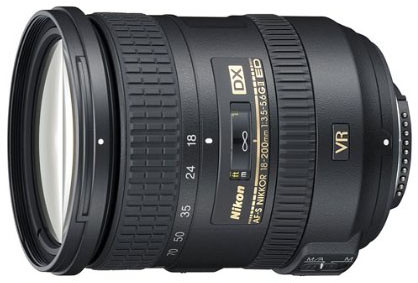 Category: All-in-one
Category: All-in-one
Weight: 19.8 oz.
What we like: Versatility.
What we don’t: The 18-300mm above is newer, lighter, and has more zoom.
We’ll start by saying that we have an emotional connection to the Nikon 18-200mm: years ago, it was the first “real” lens we purchased and accompanied us on a number of big trips. And the draw to this lens is clear. Similar to the 18-300mm above, it’s another all-in-one option that can serve as the only lens in your bag. For around $650, it’s an enticing scenario for photographers who prioritize convenience and ease of use.
However, we feel pretty strongly that the 18-300mm above is the superior all-in-one lens. The original version of the 18-200mm was released all the way back in 2005, and even the latest VR II version was 2009, meaning the lens is a little long in the tooth at this point. On the other hand, the 18-300mm is newer, lighter, and offers more zoom. Given that the price difference currently is only $50, we prefer the 18-300mm in the all-in-one category.
See the Nikon 18-200mm f/3.5-5.6G
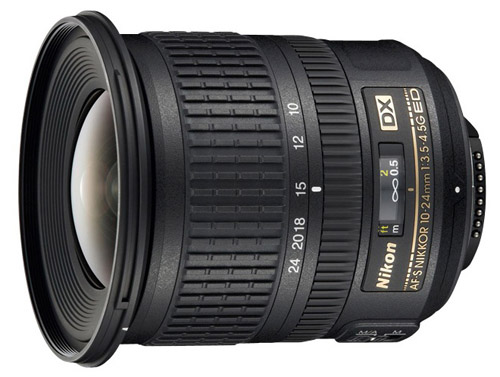 Category: Wide angle
Category: Wide angle
Weight: 16.2 oz.
What we like: The sharpest wide-angle zoom on this list.
What we don’t: For our money, we’d pick the new Nikon 10-20mm f/4.5-5.6 above.
For years, the 10-24mm f/3.5-4.5 was the leading wide-angle lens for Nikon crop sensor cameras. Third-party manufacturers like Tokina and Sigma weren’t on the radar in the same way they are today, and the Nikon 10-20mm f/4.5-5.6 was yet to hit the market. But with all of the available options and the hefty $900 price tag of this lens, it’s much harder for us to recommend the 10-24mm now.
On a more positive note, the Nikon 10-24mm f/3.5-4.5 is a quality wide-angle zoom. The build is impressive, the focal length range is very solid at a 15-36mm equivalent, and the lens is sharper than any comparable option. And stacked up to the 10-20mm f/4.5-5.6 above, you get better low light performance, although not to the same level as the Tokina. Price considerations notwithstanding, this is a solid lens for wide angle uses like outdoor photography and architecture.
See the Nikon 10-24mm f/3.5-4.5G
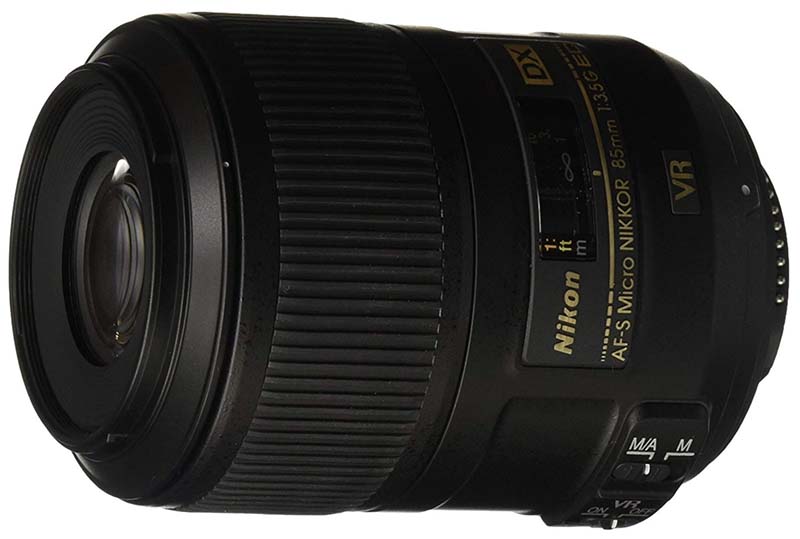 Category: Macro
Category: Macro
Weight: 12.5 oz.
What we like: A serious macro lens for DX.
What we don’t: Pricey and the f/3.5 maximum aperture.
The 40mm f/2.8G above is the more affordable macro option for DX, but the 85mm f/3.5 gets you even closer while adding vibration reduction to the mix. With a focal length equivalent of 127.5mm, this can be your go-to lens for those hard-to-get details: think jewelry, flowers, insects, and other tiny objects. It’s a true macro with 1:1 magnification, autofocus is fast and quiet, and the VR II technology makes hand-held images much more reliable. For serious macro photographers, it’s a must-have DX lens.
What are the shortcomings of the Nikon 85mm f/3.5? At a steep $550, it’s not a worthwhile purchase unless you plan on getting a lot of use out of it. Second, the maximum aperture of f/3.5 is a bit slow, although most macro photography is done in good natural light (plus you get the aforementioned image stabilization). But the sharpness and image quality are there, not to mention it can double as portrait lens for close-ups. And for those with deep pockets or who need maximum closeness, there’s always the venerable 105mm f/2.8, an FX lens that is compatible on crop-sensor cameras.
See the Nikon 85mm f/3.5G
| Lens | Price | Category | 35mm Equiv. | Weight | Aperture | VR | Filter |
|---|---|---|---|---|---|---|---|
| Nikon 35mm f/1.8G | $197 | Travel/portrait | 52.5mm | 7.1 oz. | f/1.8 | No | 52mm |
| Sigma 17-50mm f/2.8 OS | $283 | Travel zoom | 27.5-75mm | 19.9 oz. | f/2.8 | OS | 77mm |
| Nikon 50mm f/1.8G | $217 | Travel/portrait | 75mm | 6.5 oz. | f/1.8 | No | 58mm |
| Nikon 10-20mm f/4.5-5.6G | $307 | Wide angle | 15-30mm | 8.1 oz. | f/4.5-5.6 | Yes | 72mm |
| Nikon 18-140mm f/3.5-5.6G | $497 | Travel/portrait | 27-210mm | 17.3 oz. | f/3.5-5.6 | Yes | 67mm |
| Nikon 55-300mm f/4.5-5.6G | $397 | Telephoto | 82.5-400mm | 18.7 oz. | f/4.5-5.6 | Yes | 58mm |
| Nikon 18-300mm f/3.5-6.3G | $697 | All-in-one | 27-450mm | 19.4 oz. | f/3.5-6.3 | Yes | 67mm |
| Nikon 16-80mm f/2.8-4E | $1,067 | Travel zoom | 24-120mm | 17 oz. | f/2.8-4 | Yes | 72mm |
| Tokina 11-16mm f/2.8 | $419 | Wide angle | 16.5-24mm | 19.4 oz. | f/2.8 | No | 77mm |
| Nikon 40mm f/2.8G Micro | $277 | Macro | 60mm | 8.3 oz. | f/2.8 | No | 52mm |
| Nikon 18-55mm f/3.5-5.6G | $256 | Travel/portrait | 27-82.5mm | 6.9 oz. | f/3.5-5.6 | Yes | 52mm |
| Nikon 55-200mm f/4-5.6G | $350 | Telephoto | 82.5-300mm | 10.6 oz. | f/4-5.6 | Yes | 52mm |
| Nikon 16-85mm f/3.5-5.6G | $697 | Travel/portrait | 24-127.5mm | 17.1 oz. | f/3.5-5.6 | Yes | 67mm |
| Nikon 18-200mm f/3.5-5.6G | $647 | All-in-one | 27-300mm | 19.8 oz. | f/3.5-5.6 | Yes | 72mm |
| Nikon 10-24mm f/3.5-4.5G | $897 | Wide angle | 15-36mm | 16.2 oz. | f/3.5-4.5 | No | 77mm |
| Nikon 85mm f/3.5G Micro | $555 | Macro | 127.5mm | 12.5 oz. | f/3.5 | Yes | 52mm |
Throughout this article, we frequently reference focal length equivalent, or crop factor. Nikon’s DX cameras have a 1.5x crop factor, meaning that a 50mm lens on a DX camera will behave like a 75mm lens on a 35mm camera. The history behind crop factor is long, but what you need to know is that lens focal lengths are described using 35mm film as the reference point. Because the image sensor on a Nikon DX-format is 1.5 times smaller than a 35mm camera, you multiply the listed focal length of the lens by 1.5 to determine its 35mm equivalent. It’s the case for all lenses, so make sure to take this important conversion into account when choosing your DX lenses. For your convenience, we've included the 35mm equivalent of each lens in our handy comparison table above.
In terms of specific focal lengths, we can say from experience that ultra-wide-angle lenses (10-18mm on a 35mm camera) can be challenging. They require shooting close to the foreground and the photos have a very big, open feel. For wide-angle landscape shots, we prefer to shoot from around 18mm to 21mm. A normal field of view comes into play at 35mm, which is a popular focal length for street and travel photography. 50mm is the equivalent of the human eye and is great for people shots (although close-up portraits and head shots may require something closer). Telephoto lenses start at 70mm, and anything 200mm and longer is considered to be super telephoto.
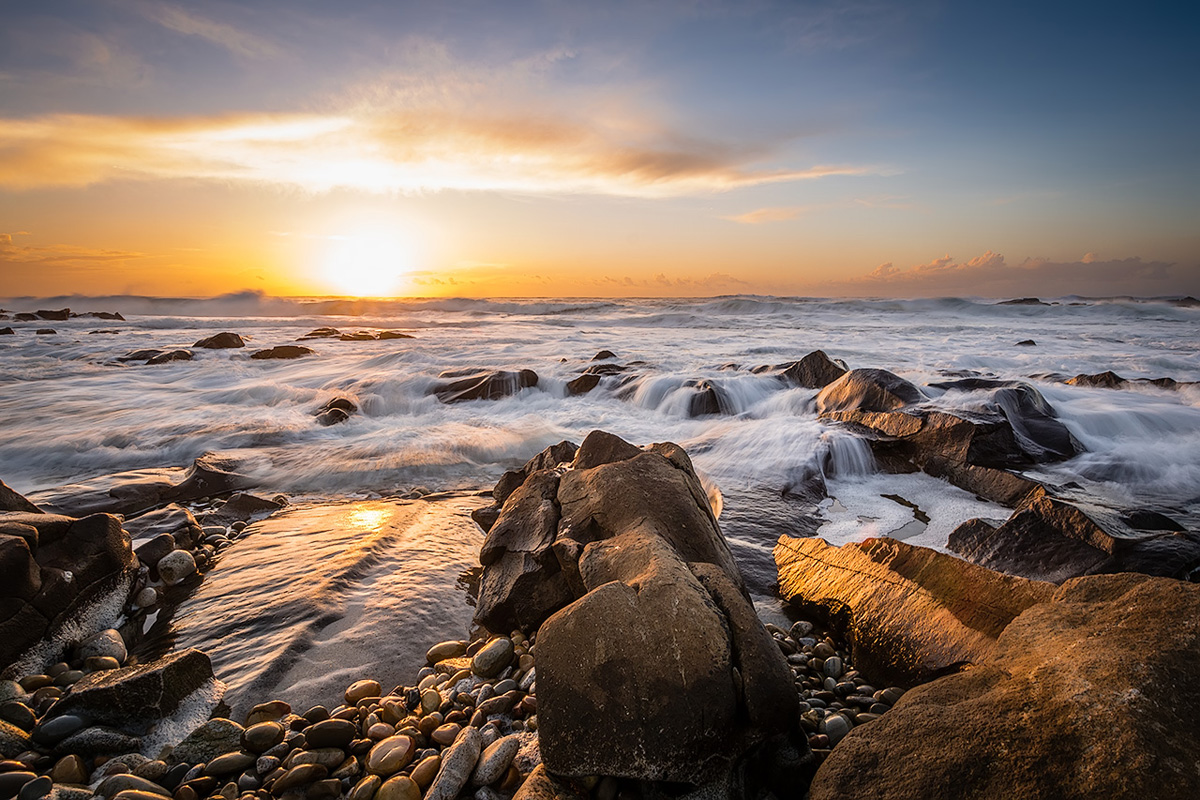
You can debate endlessly the pros and cons of zoom and prime lenses. Zoom lenses cover a range of focal lengths and therefore are more versatile, while primes often are faster, lighter, and have less distortion. In general, zoom lenses are great for beginners and situations like travel that require a variety of focal lengths. On the other hand, many street, portrait, and macro lenses are primes. These fixed focal length lenses give you superior low light performance and better bokeh than their zoom counterparts. They also weigh and cost less.
Zoom lenses tend to have more distortion than primes, particularly toward the ends of their ranges, which used to be a bigger downside that it is now. All of Nikon’s new digital SLRs have a distortion correction mode built into the camera. It’s better to have a lens with less natural distortion, but in-camera distortion correction does a pretty good job of straightening lines and make horizons look less rounded (you can finish the job in Photoshop or other editing software if need be).
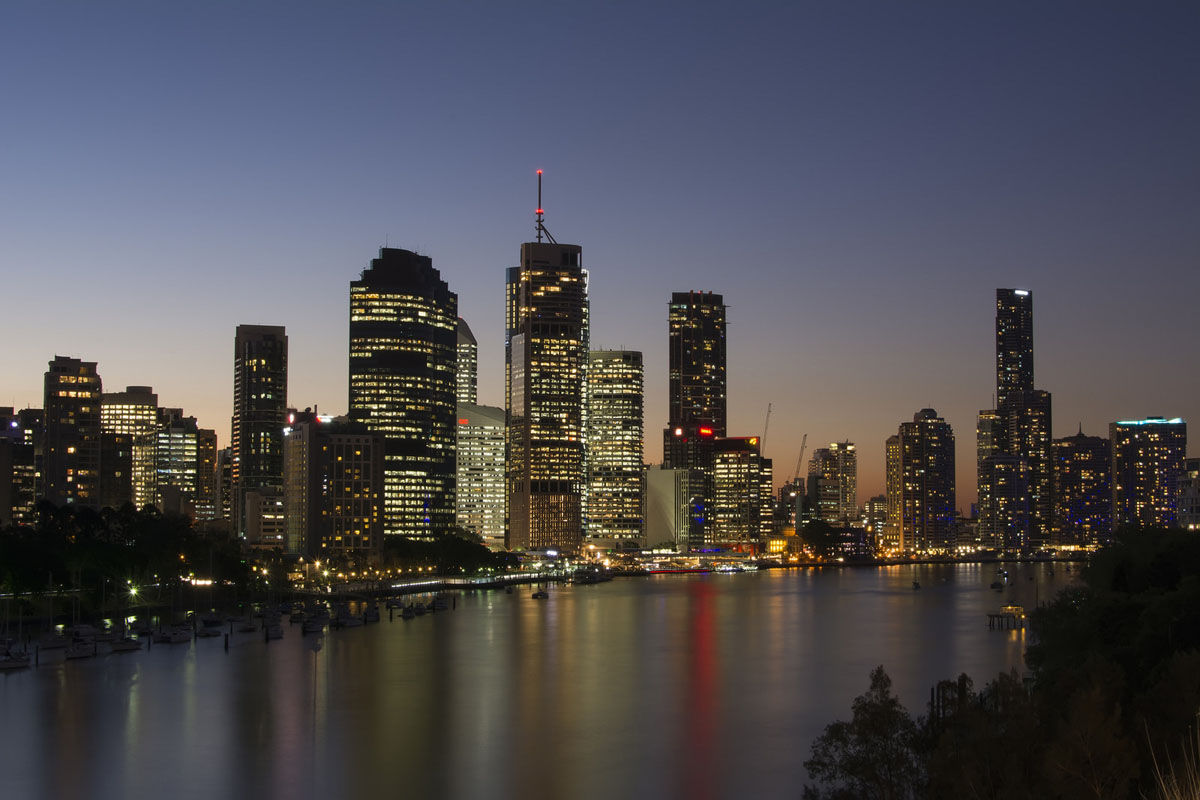
The overall trend is toward zoom lenses, which are better from an image quality perspective than they used to be. “Travel zooms” in particular, such as the Nikon 18-140mm f/3.5-5.6G, offer more convenience and versatility than prime lenses, and better optical performance and reach than the classic 18-55mm kit lenses.
Aperture is the size of the lens opening through which light passes and is measured in f-stops. The lower the f-stop (f/2.8, f/1.8 etc.), the larger the opening and the more light can enter. You can see the full f-stop scale here, and keep in mind that lower numbers make for more desirable lenses. We make the professional lens cutoff at f/2.8—lenses with this maximum aperture or faster are solid low light performers and can help you achieve the creamy background that pros love. Many non-professional zoom lenses have a maximum aperture of f/3.5, which is respectable but can cause some challenges when natural light is low. Nikon’s Vibration Reduction (VR) technology helps, as does the use of a tripod.
You’ll notice that we include lens weight in the specs and consider it to be an important factor, especially for uses like travel and outdoor photography. The movement in 2019 is toward smaller and lighter camera set-ups—led by the impressive growth of mirrorless cameras—and it’s no fun to have your camera bag weighing you down. At the low end of the DX spectrum, the Nikon 50mm f/1.8G is a feathery 6.5 ounces, while the hefty 18-200mm f/3.5-5.6G weighs in at 19.8 ounces. Of course, heavier lenses often have a larger form factor too.
The good news is that with better engineering and superior materials, many of Nikon’s DX lenses have gotten lighter over the years. For example, the 18-300mm all-in-one lens for DX actually is lighter than the older 18-200mm that has 100mm less zoom. Even Nikon’s standard 18-55mm VR II kit lens is about 20% lighter than the previous version. More plastic in the mount and barrel can affect durability in the long run, but the changes are positive on the whole. Before making a purchase, we like to tally up the total weight of our camera and lens kit. The bulk of some high quality lenses can’t be avoided, but it’s nice to pack lightweight lenses whenever possible.
.jpg)
The majority of the zoom lenses on this list have “VR” or “VR II” at the end of the product name, which stands for Vibration Reduction (Canon calls it Image Stabilization or “IS”). Here’s what you need to know: handheld photos sometimes are affected by camera shake, which can lead to blurriness that renders them unusable. VR technology involves tiny adjustments by the lens that help offset small movements of the hand. When shooting at slower shutter speeds, in low light scenarios, or with heavy lenses with slow apertures, VR is a nice addition. It won’t guarantee that your photos aren’t blurry, but it certainly improves the chances of success.
It’s worth noting that two of our favorite prime lenses, the Nikon 35mm f/1.8G and 50mm f/1.8G, do not have Vibration Reduction. Don’t worry: these lenses have fast maximum apertures, are lightweight, and much less likely to be affected by camera shake overall (it’s rare that you’ll find a fast prime with VR).
You’ll notice that the majority of lenses on this list are manufactured by Nikon (the Sigma 17-50mm and Tokina 11-16mm are the outliers). Nikon makes some of the finest lenses on the planet—they generally are sharp, have fast and accurate autofocus, and are built to last. There are a number of other viable options from third-party brands like Sigma, Tokina, and Tamron that are less expensive than comparable Nikon models and at least slightly inferior from an optical perspective. We recommend a number of lenses from these third-party brands in other articles and have nothing against them, but the “Best of DX” is a tough list to crack and Nikon's native offerings often win out in quality.
Most Nikon FX (full-frame) lenses are compatible on DX cameras, but you won’t be utilizing the full potential of the lens (the area of the lens that extends beyond the sensor will be cut out of the photo). Because FX lenses are considerably more expensive and heavier than DX lenses, we don’t recommend buying them for a DX camera. If you already own FX lenses, you can try them on your DX camera.
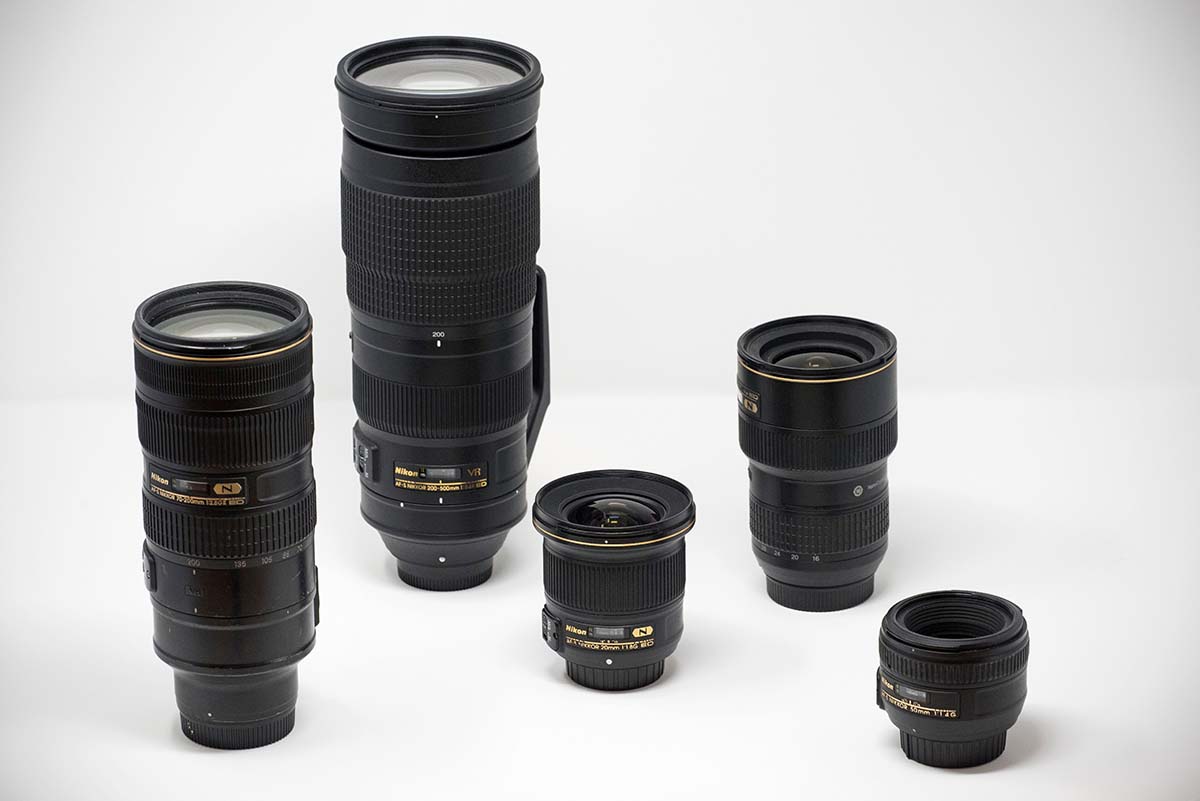
DX lenses technically are compatible on FX cameras, but the camera only will record the center of the image (most newer Nikon cameras automatically select a DX crop mode whenever a DX lens is attached). The result is a compromised image that is a disservice to your high-end FX camera. If you spend the money to go for a full-frame camera, you should plan on investing in full-frame lenses as well.
Back to Our Top Nikon DX Lens Picks Back to Our DX Lens Comparison Table